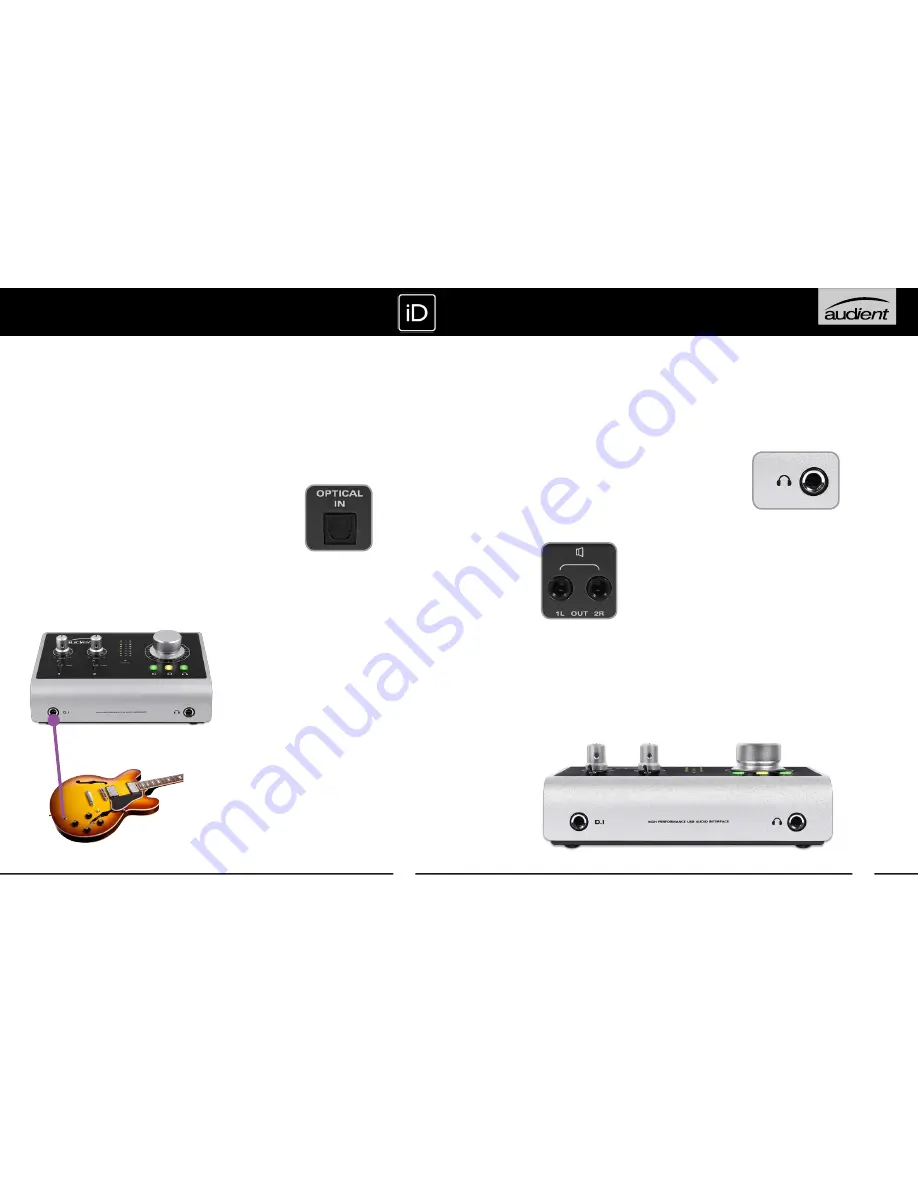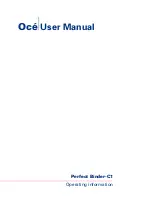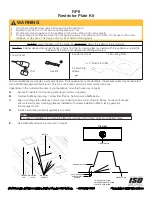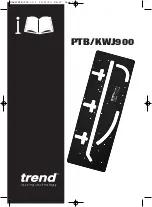
14
13
Speaker Outputs
iD14 has stereo speaker outputs on the
back panel in the form of balanced TRS jack
connectors. The outputs are impedance
balanced using the same topology as our
flagship console, the
ASP8024
.
The outputs are fed from high quality
Burr-Brown DACs (Digital to Analogue
Convertors) sending clean, linear audio to
your speakers, perfect for critical listening.
You can use these outputs for more than
just speakers. A good example of this is if
you want to use a dedicated headphone
amplifier for multiple musicians, you can
send out two mono, or one stereo from
these outputs, This is configured in the iD
mixer software.
Headphone Output
iD14 features a high current headphone
amplifier which is fed by it’s own seperate DAC
and can be accessed from the headphone
jack on the front of the unit.
This can be used instead of or alongside
speakers to get an idea how your mix
sounds on headphones, or to provide artist
headphone mix (or even to drive a small set
of loudspeakers from an unbalanced Y-split
cable).
The headphone output can comfortably
drive a wide range of headphone
impedances meaning that you will get great
sounding audio no matter what model of
headphones you have.
HARDWARE FEATURES
Instrument Input
iD14 employs a discrete class-A JFET
instrument (D.I) input on channel one which
is easily accessible on the front of the unit.
The JFET circuitry adds a tiny bit of colour
and distortion to the signal, making it sound
great on guitars and basses.
Plugging in a TS (tip-sleeve unbalanced)
jack will override the mic signal and turn
channel one into a fully fledged, fantastic
sounding instrument input with access to the
polarity reverse (useful for phase alignment
between a mic and D.I) and the +10dB boost
for quiet inputs.
Digital Inputs
iD14 features an optical input
connection. This can be set to operate as
stereo optical S/PDIF or 8-channel ADAT
(SMUX) via the System Panel in the iD mixer
application. Both formats will operate at up
to 96kHz sample rate.
Running in S/PDIF mode, the optical input
provides the option to integrate an external
mic pre
, allowing 2 channels of audio up to
96KHz.
Running in ADAT mode, the optical input
provides a great way to expand to 10 inputs
for recording via an external mic preamp
such as an
Audient ASP800
TM
. When using
88.2kHz and 96kHz as a sample rate, you
only have access to 4 channels of digital
input (due to the way SMUX works).
For more information about system
clocking please refer to
pages 23
onwards.
HARDWARE FEATURES









































